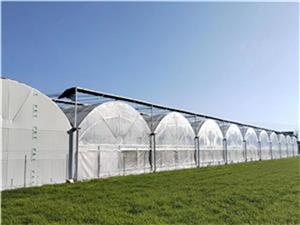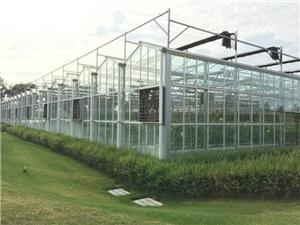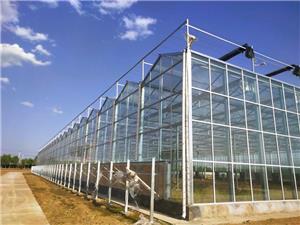Light deprivation greenhouse
The light deprivation greenhouse is a specially designed greenhouse, whose main function is to limit or regulate the intensity and cycle of light within the greenhouse.
The light deprivation greenhouse can simulate different seasons by controlling the light cycle, to meet the growth needs of specific crops. By adjusting the on-off time of the lighting equipment, the duration of sunlight for the crops can be extended or shortened, which is beneficial for the growth and development of the crops. This is particularly important for phototropic crops such as flowers, vegetables, cannabis, and medicinal plants. Its main advantages are as follows:
Shading function: The shading greenhouse has the function of regulating light. It can control the intensity and cycle of light in the greenhouse through shading cloth or shading nets. This is very important for some photosensitive crops, as it can help regulate the growth rhythm of the crops.
Temperature control: The shading greenhouse can effectively control the temperature inside the greenhouse by choosing shading materials and adjusting the degree of shading. During the hot summer period, the shading greenhouse can reduce direct sunlight and lower the indoor temperature, providing an appropriate growth environment for the crops. In winter, the shading greenhouse can increase the temperature inside the greenhouse and extend the growth period of the crops.
Avoiding uneven light: Since the light and temperature in the greenhouse can be controlled, the Light deprivation greenhouse shading greenhouse can prevent crops from growing overly long stems or having overly large leaves, allowing the light to be distributed more evenly on the crops, ensuring the normal growth and development of the crops.
Protecting crops: The shading greenhouse can protect crops to a certain extent, preventing them from being harmed by adverse weather conditions, pests and diseases, and harmful gases. At the same time, the shading greenhouse can also reduce the impact of external noises, wind, etc. on the crops. Overall, the advantages of a light-shielded greenhouse lie in its ability to provide a stable growing environment, enabling crops to grow healthily and efficiently, increasing yields and quality, and offering more possibilities and flexibility for agricultural production.
The light deprivation greenhouse is a specially designed greenhouse, whose main function is to limit or regulate the intensity and cycle of light within the greenhouse.
The light deprivation greenhouse can simulate different seasons by controlling the light cycle, to meet the growth needs of specific crops. By adjusting the on-off time of the lighting equipment, the duration of sunlight for the crops can be extended or shortened, which is beneficial for the growth and development of the crops. This is particularly important for phototropic crops such as flowers, vegetables, cannabis, and medicinal plants. Its main advantages are as follows:
Shading function: The shading greenhouse has the function of regulating light. It can control the intensity and cycle of light in the greenhouse through shading cloth or shading nets. This is very important for some photosensitive crops, as it can help regulate the growth rhythm of the crops.
Temperature control: The shading greenhouse can effectively control the temperature inside the greenhouse by choosing shading materials and adjusting the light deprivation greenhouse degree of shading. During the hot summer period, the shading greenhouse can reduce direct sunlight and lower the indoor temperature, providing an appropriate growth environment for the crops. In winter, the shading greenhouse can increase the temperature inside the greenhouse and extend the growth period of the crops.
Avoiding uneven light: Since the light and temperature in the can be controlled, the shading greenhouse can prevent crops from growing overly long stems or Light deprivation greenhouse having overly large leaves, allowing the light to be distributed more evenly on the crops, ensuring the normal growth and development of the crops.
Protecting crops: The shading greenhouse can protect crops to a certain extent, preventing them from being harmed by adverse weather conditions, pests and diseases, Light deprivation greenhouse and harmful gases. At the same time, the shading greenhouse can also reduce the impact of external noises, wind, etc. on the crops. Overall, the advantages of a light-shielded greenhouse lie in its ability to provide a stable growing environment,Light deprivation greenhouse enabling crops to grow healthily and efficiently, increasing yields and quality, and offering more possibilities and flexibility for agricultural production.




